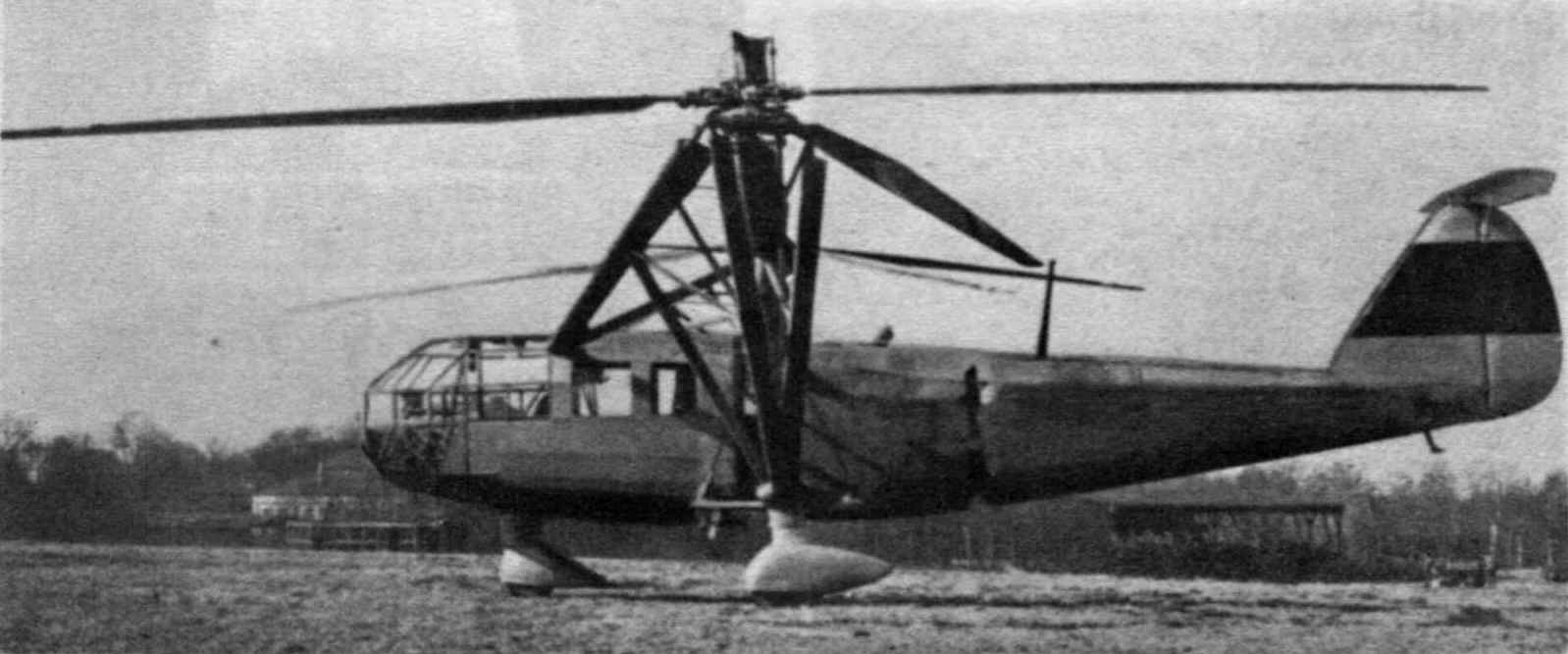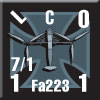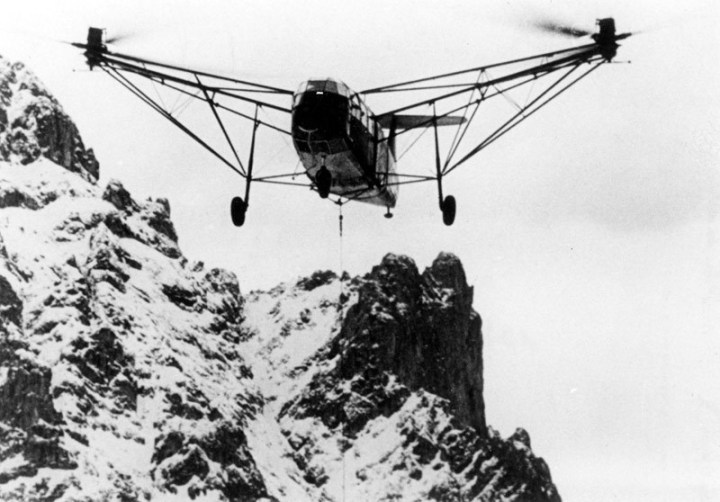The Cruel Sea:
The Fa.223 Drache
by Mike Bennighof, Ph.D.
September 2024
 For the Second Great War at Sea setting, I wanted to blend fiction and reality – the background would differ slightly (the First World War having ended early, allowing the great empires to survive) and the technology would as well (airships and helicopters dominate the skies). The ships and aircraft would need to have some grounding in reality, and not be manufactured from whole cloth in my feverish brain. For the Second Great War at Sea setting, I wanted to blend fiction and reality – the background would differ slightly (the First World War having ended early, allowing the great empires to survive) and the technology would as well (airships and helicopters dominate the skies). The ships and aircraft would need to have some grounding in reality, and not be manufactured from whole cloth in my feverish brain.
That includes equipping the naval air forces of Germany, France and Russia with helicopters – helicopters that actually existed, though not all of them had full-scale production runs. The Imperial German Navy gets one autogyro plus two different helicopters: a light-weight machine (the Flettner Fl.282 Kolibri and a heavy helicopter, the Focke-Achgelis Fa.223 Drache.
While Anton Flettner went for small machines like the Fl.282, Heinrich Focke sought to produce very large helicopters capable of hefting heavy loads. Focke saw helicopters becoming useful not only as transportation, but in construction as well. The Sikorsky “Flying Crane” still seen in today’s skies owes much to his concepts.
His first helicopter, the Fw.61, flew in 1936. It had two rotors, moving in opposing directions to cancel torque. The machine had the airframe and engine of an Fw.44 biplane trainer. Focke-Wulf had built autogyros under license from Cierva of Spain, and the new helicopter looked very much like an autogyro, complete with a propeller. However, in the case of Focke’s machine the small propeller only served to keep the engine cool, with power coming from the rotors (the definition of a helicopter as opposed to an autogyro).
 In a brilliant publicity stunt (right), Focke had the aircraft flown inside a sports arena by the celebrated test pilot Hanna Reitsch, a favorite of Adolf Hitler’s. But this contact with the party elite also brought problems. Focke had founded the Focke-Wulf in 1924, but when the Nazis came to power they found his politics unacceptable and organized a shareholder revolt against his leadership. By 1937 he had been forced out of his own company, but the next year the Nazis allowed him to form a new, much smaller firm together with test pilot Gerd Achgelis. In a brilliant publicity stunt (right), Focke had the aircraft flown inside a sports arena by the celebrated test pilot Hanna Reitsch, a favorite of Adolf Hitler’s. But this contact with the party elite also brought problems. Focke had founded the Focke-Wulf in 1924, but when the Nazis came to power they found his politics unacceptable and organized a shareholder revolt against his leadership. By 1937 he had been forced out of his own company, but the next year the Nazis allowed him to form a new, much smaller firm together with test pilot Gerd Achgelis.
Focke-Achgelis scored quickly, with a contract with the airline Deutsche Lufthansa for a larger version of the Fw.61. This Fa.266 Hornisse would carry six passengers and serve on feeder lines, bringing passengers from sites without full-scale airports to catch their flights at major cities. In the summer of 1939 the Air Ministry declared the craft a military project, and when the prototype was completed in the fall of 1939 it was designated the Fa.223.
After prolonged ground tests, the helicopter flew in the autumn of 1940, and the machine quickly set records for helicopter performance. The Air Ministry ordered 100 of them, but their construction proceeded very slowly. Still classed as non-military project (despite the re-assignment to the German Army) the Fa.223 had low priority for materials and skilled labor.

A production model of the Fa.223.
The Fa.223, known as the “Drache” (“Dragon” and figuratively a shrewish woman or bitch, as its pilots attested) was a much larger machine than the Kolibri, with paired rotors held on outriggers, one on either side of the fuselage. Those built after the first prototype had a glassed-in nose copied from those of German bombers, and the rest of the fuselage looked much like a conventional aircraft (except for the absence of wings).
Initially, the Drache was to be produced in five versions: a training model, an anti-submarine helicopter bearing two depth charges, a transport, a search and rescue machine and a reconnaissance helicopter. Sanity soon prevailed, and a single multi-purpose model took their place, with interchangeable fittings for bomb racks, cameras, winches, wire-layers, fuel tanks and rescue cradles.
Daily Content includes no AI-generated content or third-party ads. We work hard to keep it that way, and that’s a lot of work. You can help us keep things that way with your gift through this link right here.
 In the summer of 1942, Fa.223 helicopters began to come off the production line, but American bombing raids destroyed both the factory and the completed aircraft. Focke-Achgelis built a new line and re-opened production in February, 1943. Testing resumed, with helicopters lifting all sorts of heavy gear and undergoing performance trials. In the summer of 1942, Fa.223 helicopters began to come off the production line, but American bombing raids destroyed both the factory and the completed aircraft. Focke-Achgelis built a new line and re-opened production in February, 1943. Testing resumed, with helicopters lifting all sorts of heavy gear and undergoing performance trials.
The initial plan in September 1943, to nab Italian dictator Benito Mussolini from his mountaintop prison included a Fa.223, but the machine broke down and a Fi.156 liaison plane had to be substituted. Drache helicopters undertook several rescue missions, but only seven had been built when American bombers destroyed the new factory complex.
In the fall of 1944, two Fa.223 aircraft went to the Mountain Warfare School for fall maneuvers. They made an enormous impression on the jäger officers, lifting supplies and even cannon up mountains that could not have been scaled by men and mules. They also served as troop transports, carrying four soldiers inside the fuselage and eight more on seats attached to the outriggers. The two aircraft undertook 83 missions over 30 days.
[use this photo: http://img171.imageshack.us/img171/861/fa223als5.jpg]
An Fa.223 shows its abilities high among the Alps.
The school’s commanding officer recommended that helicopters be added to the mountain division establishments, but the war situation soon doomed such plans. On the Western Front, a demand for mountain troops led to the school’s young recruits being formed into a pair of battalions and dispatched to the Colmar area. There, without the helicopters, they were soon ground down by the American advance. The 202nd Mountain Battalion, trapped behind American lines, might have been saved by the aircraft with which they’d trained only a few weeks before.
Less than a week afterwards, the Air Ministry ordered Fa.223 production suspended and all workers transferred to Messerschmitt plants to work on the Me262 jet fighter. In December, the ministry reversed itself and demanded 400 Fa.223 per month, despite a total lack of machine tools and skilled labor to build them. Focke and his team somehow managed to put together one assembly line at Tempelhof outside Berlin and another at the Avia works in Czechoslovakia, cranking out a handful of aircraft before the war ended. The last few machines went to the Luftwaffe’s 40th Transport Squadron, and saw action alongside the Fl.282 against the Americans. One crew flew their Fa.223 over much of Eastern Europe in an odyssey to escape the Red Army, eventually surrendering to the Americans.
Second Great War at Sea: The Cruel Sea gives you five squadrons in Imperial German black, to operate from the High Seas Fleet’s helicopter carriers. They’re effective machines, with a much greater range than the Fl.282 and a nominal attack capacity.
You can order The Cruel Sea right here, right now.
Sign up for our newsletter right here. Your info will never be sold or transferred; we'll just use it to update you on new games and new offers.
Mike Bennighof is president of Avalanche Press and holds a doctorate in history from Emory University. A Fulbright Scholar and NASA Journalist in Space finalist, he has published a great many books, games and articles on historical subjects; people are saying that some of them are actually good.
He lives in Birmingham, Alabama with his wife and three children. He will never forget his Iron Dog, Leopold. Leopold feared ocean waves.
Daily Content includes no AI-generated content or third-party ads. We work hard to keep it that way, and that’s a lot of work. You can help us keep things that way with your gift through this link right here.
|
